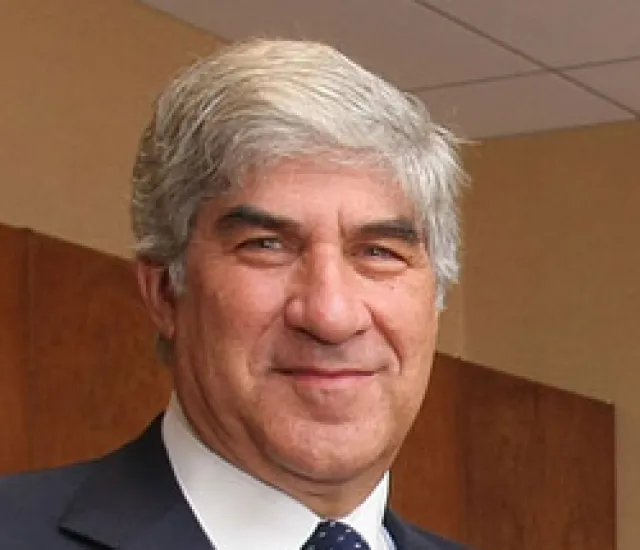The lack of a discernible trend in most of the global markets and the sharp unpredictable twists and turns in individual markets is making it very tough for some of the most prolific macro investors to make money this year.
For example, through April 25, Bruce Kovner’s Caxton Global Investment was down 1.37 percent. Keep in mind that for the past few years, the portfolio is being led on a day-to-day basis by Andrew Law, Caxton's Chief Investment Officer.
Sure enough, on April 27, Caxton announced it is looking for an additional edge to its investment process. It said it is taking a minority interest in London-based Wadhwani Asset Management and the firm's founder and CEO, Dr. Sushil Wadhwani, will become a partner at Caxton. In the announcement, Caxton said Dr. Wadhwani takes a quantitative approach to investing that relies heavily on detailed economic models and that he will be responsible for utilizing his successful investment strategy to manage “a meaningful notional capital allocation” for Caxton Global Investments in parallel with the Keynes funds, the funds Dr. Wadhwani manages.
"We have had a relationship with Wadhwani Asset Management for some time, and I have known him personally for the better part of a decade." said Law, "Dr. Wadhwani is a very talented investor with a successful track record and an impressive background. His economic model-based approach to investing fits strategically with Caxton's overall macro investment philosophy."
On the other hand, Louis Bacon’s Remington Investment Strategies, L.P., the domestic version of Moore Global Investment, in April reversed a loss for the year, posting a 2.25 percent gain for the month, according to investors. This put him up 1.71 percent for the year.
Meanwhile, through April 21, Paul Tudor Jones II’s Tudor BVI Global was only up 2.04 percent.
And through the middle of April, Alan Howard’s gargantuan $19 billion or so Brevan Howard Fund was up 2.25 percent. Keep in mind this period did not capture the stock market’s huge run-up in the second half of the month.
It is not clear how he fared for all of April or what investments worked that month. But in a March report for his BH Macro Ltd. Fund, Howard told investors the fund made money in interest rates macro trading, primarily in EUR short end rates. Gains were also made in credit trading, commodity macro trading, equities, and in US dollar interest rate basis swaps. He also stressed that no strategies registered significant losses.
Howard also made it clear he was very cautious going into April. Commenting on the US, he said revisions to both growth and inflation suggest that the economy is in less healthy shape than anticipated and faces greater downside risks. On the other hand, he said monetary policy implications were mixed and had become “a balancing act,” leaving the Federal Reserve uncomfortably on accommodative auto-pilot due to amplified concerns over the growth-inflation trade-off. He also noted that the debate over fiscal policy was heating up and that Congress was determined to cut spending further, setting the stage for intense debate over upcoming budgets and the debt ceiling. “These developments are certain to produce a volatile environment,” he warned investors.
In Europe he asserted that it is not yet possible to signal the “all clear” for the sovereign debt crisis. He worried that the risk of default by Greece was rising and worried about fiscal developments in Portugal and Ireland. Noting the European Central Bank (ECB) hiked official rates for the first time at its April meeting, Howard’s letter warned: “The ECB faces a complex environment, having to fulfil its price stability mandate amid rising inflation above its defined level of price stability, without boosting the euro to unsustainable levels and jeopardizing the financial stability of some peripheral countries.”
However, Howard rumination and the small gains generated by a number of these iconic funds are not as bad as they appear. Keep in mind when there is such uncertainty in the markets, traders like Jones, Howard and Bacon heavily reduce their risk and exposure. This is partly what their investors are paying for.
For example, Brevan Howard may have been up less than 1 percent in 2010. But in 2008, when most managers lost large sums, he was one among an elite group that made money, racking up a better-than 20 percent return.
In 2008, BVI lost just 4 percent—its first losing year—while the internal portfolio that Jones personally had been running for several decades eked out a small gain, enabling him to avoid a losing year so far.
The reality is that if a macro trader were actually way outperforming the global markets right now, it would probably be the result of correctly taking a big directional bet on a couple of fast moving markets. This is not what you want you want your hedge fund manager doing during very volatile, uncertain times.







